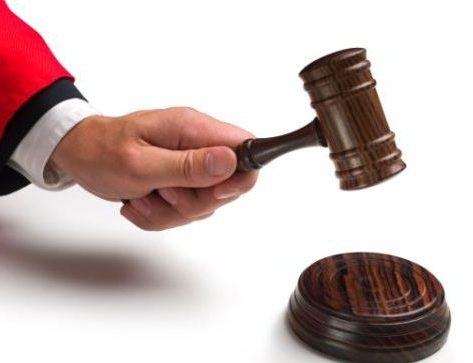Innocent harm — a case, an incident — takes place when a socially dangerous act is committed. As a result, consequences ensue, but the objective side of the violation is absent. The latter means that the action was committed without intent and not by negligence. Responsibility for innocent harm is not provided. Currently, this category of socially dangerous actions includes situations when a person, foreseeing the likelihood of consequences, could not prevent them due to the inconsistency of his own psychophysiological qualities with the current circumstances. Next, we consider in more detail the concept of innocent harm. 
General information
Until 1996, judicial practice and legislation stipulated innocent harm only in the absence of any or both of the criteria of unlawful negligence. However, over time, regulations are being improved due to the emergence of a new set of reasons. As a result, legislation covers a wider range of issues. This, in turn, allows both to increase judicial practice and more clearly distinguish between the concepts of unlawful negligence and innocent damage. This fact is of particular importance in the CPC. Not taking into account the ability or inability of a person to realize the nature of his behavior and to manage it, the legislator transferred the problem under consideration from a subjective category to an objective one. Including such a definition as innocent harm, the Criminal Code of the Russian Federation complies with the provisions of the Constitution, moral standards, universally recognized principles of world law.
Classification
The criminal code defines the types of innocent harm. The first of them is fixed in Art. 28, part 1 of the CPC. In particular, the provision considers the case as innocent harm. If we apply the rules to crimes that differ in formal composition, then the above means that the person who performed the action dangerous to others did not or could not be aware of the social risk that is assumed with such behavior. Moreover, under, in fact, behavior should be understood not only as an action, but also as a person’s inaction, as a result of which there is an innocent harm. Example: the sale of a fake bill by a citizen who did not know and, in accordance with the circumstances of the case, could not realize that it was fake.  If we talk about violations having a material composition, then the innocent infliction of harm - an “incident” - consists in the fact that the person who committed the socially dangerous act did not foresee the probability of the onset of consequences and, in accordance with the circumstances of the case, could not and should not have assumed them. This category differs from negligence in that it lacks both or at least one of its criteria. In order to accept the case as an innocent harm, it is not necessary that both signs should be absent simultaneously. The second is a category that is based on the individual characteristics of a person who has committed a socially dangerous act. This, in particular, is about the psychophysical state of the face. In Art. 28, part 2 describes a situation in which innocent harm is recognized as such not because of the willful or intellectual attitude of the subject, but as a result of the objective impossibility of somehow preventing the onset of socially dangerous consequences for any reason provided by law.
If we talk about violations having a material composition, then the innocent infliction of harm - an “incident” - consists in the fact that the person who committed the socially dangerous act did not foresee the probability of the onset of consequences and, in accordance with the circumstances of the case, could not and should not have assumed them. This category differs from negligence in that it lacks both or at least one of its criteria. In order to accept the case as an innocent harm, it is not necessary that both signs should be absent simultaneously. The second is a category that is based on the individual characteristics of a person who has committed a socially dangerous act. This, in particular, is about the psychophysical state of the face. In Art. 28, part 2 describes a situation in which innocent harm is recognized as such not because of the willful or intellectual attitude of the subject, but as a result of the objective impossibility of somehow preventing the onset of socially dangerous consequences for any reason provided by law.
Lack of intent in action
The conditions for innocent harm are prescribed by law. In situations where a person was not aware and, in accordance with the circumstances, could not be aware of the social danger of his behavior (inaction / action), he actually performed the objective part of an intentional offense. This category has a variety of manifestations. The most common example is a situation where a person who actually performed the objective part of a crime was misled by one or several third parties. As a result of this, the violator acted as an instrument of unlawful action. This indicates innocent harm. Example: one person asks another to bring a package of medicines to a relative in another city. As a result, it turns out that instead of drugs in the package were drugs. Also common at one time was a situation where a citizen was asked to help with towing a car. A person may not be aware that objectively contributes to the theft of vehicles.  In other circumstances, the person might not have been aware of the subject (nature of the object) of the harm caused when he performed the actually objective part of the crime. So, there was a situation in which a police officer who had fallen asleep in the hall of the railway station had a bag stolen, in which, among other things, was a service weapon. A thief cannot be prosecuted for theft of this item. Otherwise, it will qualify as an imputed charge.
In other circumstances, the person might not have been aware of the subject (nature of the object) of the harm caused when he performed the actually objective part of the crime. So, there was a situation in which a police officer who had fallen asleep in the hall of the railway station had a bag stolen, in which, among other things, was a service weapon. A thief cannot be prosecuted for theft of this item. Otherwise, it will qualify as an imputed charge.
Inability to foresee the consequences
This innocent harm is associated with such a category as criminal negligence. When establishing negligence, the presence of both objective and subjective criteria is necessary. As mentioned above, in the absence of any of them, the act is qualified as innocent harm. Failure to establish an objective criterion implies that the subject does not violate any precautionary rules. In such cases, harm usually occurs through the fault of the victim. A situation in which there is no subjective criterion may be due to the fact that, due to his individual characteristics, a person could neither foresee harm, nor prevent it. Personal qualities of an individual may be different. Those or other features are taken into account depending on the nature of the crime that he is charged with. For example, if this offense is connected with the transport sphere, then the acuity of hearing and vision, the individual time of the motor reaction and others are taken into account.  If there was an innocent harm during the performance of professional activities (negligence) or in the sphere of life, then life experience, work experience, as well as the level of specialist training will be taken into account here. Rarely, the subjective criterion is absent due to the situation. For example, the driver, having passed the red signal, collided with the train standing in front. As a result, serious material damage was caused. However, during the consideration of the case, it was established that at that moment there was a strong snowstorm, as a result of which wet snow covered the semaphore, and the driver did not see the signal. In this situation, the absence of a subjective attribute is associated exclusively with the situation.
If there was an innocent harm during the performance of professional activities (negligence) or in the sphere of life, then life experience, work experience, as well as the level of specialist training will be taken into account here. Rarely, the subjective criterion is absent due to the situation. For example, the driver, having passed the red signal, collided with the train standing in front. As a result, serious material damage was caused. However, during the consideration of the case, it was established that at that moment there was a strong snowstorm, as a result of which wet snow covered the semaphore, and the driver did not see the signal. In this situation, the absence of a subjective attribute is associated exclusively with the situation.
The value of the personal qualities of the offender
It was mentioned above that innocent infliction of damage takes place when a mismatch of the psychophysiological characteristics of the offender with the current situation is established. This, in particular, can be an extreme situation. It is understood as extreme, extremely complex, unusual circumstances that represent a certain degree of social danger. They can occur when a person interacts with nature, technology, another person or a group of subjects. It is very difficult to give an exhaustive list of extreme conditions.In all cases, this is a matter of fact. An example would be an incident in which, while rescuing a drowning man, while fighting for his life, he carries away under water the man who came to his aid, but he himself remains alive. The rescuer is killed. Psychophysiological qualities that are mentioned in the law can be expressed in such conditions as horror, shock, stress, stupor and others.
Nervous strain
Another option is innocent harm resulting from nervous overload. She represents a state of profound fatigue. Under its influence, a person could not prevent harm. As an indispensable sign of neuropsychic overloads is forced. So, for example, the operator of the power station that worked the day, who did not wait for the shift operator, remains on the next shift. After some time, he falls asleep due to fatigue and does not respond to the alarms of the devices. As a result, equipment malfunctions or explodes. However, for example, in a situation where a trucker who deliberately violated the regime of rest and movement fell asleep at the wheel and hit a pedestrian, he should be held accountable by law. In this situation, the establishment of innocence is allowed only through a judicial psychological assessment of the state of the offender at the time of the commission of the dangerous act.
No signs of frivolity
This is another form of innocent damage. It is specified in article 28 of the CPC. The essence of the absence of signs of frivolity is that the person who foresaw the likelihood of the onset of consequences, not arrogantly, reasonably counted on their prevention. The occurrence of harm in such situations is caused by the intervention of random circumstances. Man could not foresee them and prevent their detrimental effect. 
Intellectual moment of negligence
Each form of guilt can be characterized on the basis of two elements. They are volitional and intellectual moment. The latter reflects the subjective attitude of a person who has committed a socially dangerous act to his behavior. Negligence acts as the only form of guilt in which the individual does not foresee the onset of consequences in any manifestation: neither abstract, nor real, nor inevitable. However, this fact does not at all mean the absence of any mental attitude to what happened. It is a form of such an attitude. The fact that a person did not foresee the consequences of negligence indicates his neglect of the interests of others and the requirements of the law. In the presence of a number of circumstances, the individual could and should have assumed them.  The intellectual moment is characterized by negative and positive signs. The first means the unpredictability of the likely consequences, includes a lack of understanding of the social danger of the act that he commits and the subject of the crime. This provision notes the similarity of negligence and innocent damage. A positive sign is distinguished by the presence of objective and subjective criteria. The first means that the offender should have assumed the consequences, the second - that he could have foreseen, but only if it could have been any other person. In other words, the absence of an obligation to provide for socially dangerous consequences eliminates the individual's guilt.
The intellectual moment is characterized by negative and positive signs. The first means the unpredictability of the likely consequences, includes a lack of understanding of the social danger of the act that he commits and the subject of the crime. This provision notes the similarity of negligence and innocent damage. A positive sign is distinguished by the presence of objective and subjective criteria. The first means that the offender should have assumed the consequences, the second - that he could have foreseen, but only if it could have been any other person. In other words, the absence of an obligation to provide for socially dangerous consequences eliminates the individual's guilt.
Characteristics of the act of frivolity
It is revealed through a number of signs. First of all, it should be said that the subject is aware of the social danger of inaction or of the action that he performs and in which there is a potential threat of serious consequences. The individual also suggests the likelihood of the onset of the consequences of his behavior. It is worth noting here that despite this assumption, a person does not clothe them in any particular form.He presents their likelihood abstractly. Along with this, the person, hoping arrogantly for the prevention of consequences, suggests the presence of factors that, in his opinion, can help him avoid them.  As for the volitional moment, the legislation defines it not as hope, but as a calculation to eliminate socially dangerous consequences. Guilty in this case implies real, very specific circumstances that may contribute to this. He evaluates their value incorrectly. As a result of this, the calculation to eliminate the criminal consequences becomes baseless and presumptuous, not having sufficient prerequisites.
As for the volitional moment, the legislation defines it not as hope, but as a calculation to eliminate socially dangerous consequences. Guilty in this case implies real, very specific circumstances that may contribute to this. He evaluates their value incorrectly. As a result of this, the calculation to eliminate the criminal consequences becomes baseless and presumptuous, not having sufficient prerequisites.
Differentiation of categories
Given all of the above, we can say that the innocent damage does not have an intellectual moment. In other words, the psychological positive relationship between the perpetrator of the crime and the criminal consequences caused by his behavior is not visible. However, this provision is valid only in cases provided for in Art. 28, paragraph 1 of the CPC. If we consider the volitional moment, then we can note a certain similarity in the categories. It lies in the fact that with frivolous, and with careless, and with innocent damage caused, there is no positive attitude towards the possible onset of consequences that pose a social danger. However, in the first case, a person foresees the possibility of such a result. But at the same time, he commits a potentially dangerous volitional act, trying to apply any factors in his personal interests, trying to prevent dangerous consequences. So, for example, a person, knowing that damage is likely to occur, hopes to prevent it by using objective factors: notifying third parties, taking any technical measures, etc.